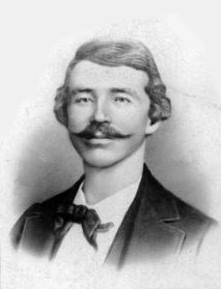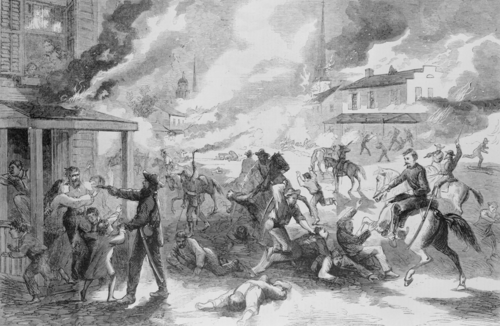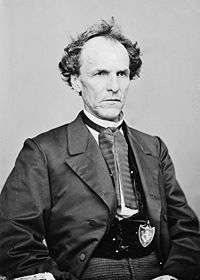There were few battles in Kansas turning the Civil War, but it was the scene of brutal guerrilla fighting. This had been occurring between the pro-slavery and anti-settlers since John Brown was here in the 1850s. 150 years ago today one of the most notorious guerrilla actions occurred – the Lawrence Massacre.
 |
| Quantrill |
The Confederate in charge of the men who perpetrated the slaughter was William Quantrill. Although he was born in Ohio and anti-slavery, he became a drifter and ruffian in Missouri and Kansas and learned the profitability of turning in escaped slaves. His political views followed his pocketbook. When the war came, he joined a regiment of Cherokee Indians fighting for the Confederacy, and learned guerrilla tactics from them. After fighting in the Battle of Wilson's Creek he deserted the army and set out to form his own group of raiders. A handful of men joined him to attack the Union army and civilians along the Kansas-Missouri border. His men included Frank and Jesse James and the Younger Brothers, who would gain notoriety as criminals after the war.

In 1863 Quantrill decided to attack and destroy a Union town as retaliation for Union deprecations on a smaller scale. He picked the town of Lawrence, Kansas, which had been sacked already in the “Bleeding Kansas” fighting before the war. He convinced other Bushwakers to join him, and all told they numbered 300-400 men. Multiple columns converged on the town, striking early on the morning of August 21. There were no soldiers in the town at the time, and the raiders were free to ride through, looting, burning and plundering. The military age men and boys were stopped and killed. Quantrill had prepared lists of men and businesses to be specially targeted. At the top of the list was Senator James Lane, a leader who had led devastating raids into Missouri. He escaped only by running through a cornfield in his nightshirt.
 |
| Lane |
After four hours of destruction the Buskwackers made their escape. A quarter of the buildings in the town were burnt, and about 200 men and boys lay dead. The raiders only lost one man, shot from his horse as they left the town. The column split up, effectively avoiding the weak Union pursuit.
 |
| Ruins of Lawrence |
The issues of the guerrilla fighting were not as clear cut as they might seem. The southerners had suffered much at the hands of their pro-slavery neighbors. One boy, Riley Crawford, was sent by his mother to ride with Quantrill when he was only 13, because the Yankees had burned their home and killed his father. The Lawrence Massacre was certainly unwarranted, but the wrongs were not all one sided.






0 comments:
Post a Comment